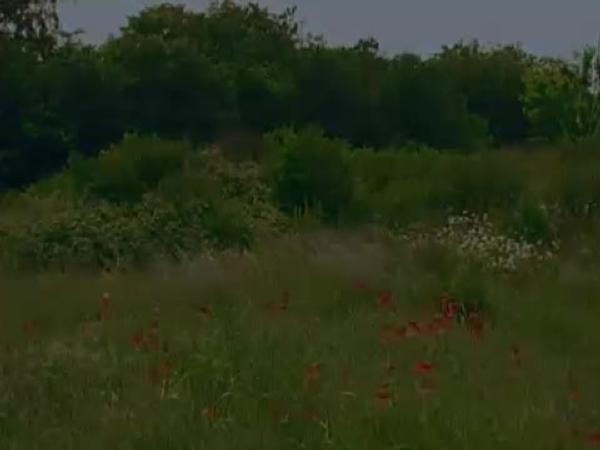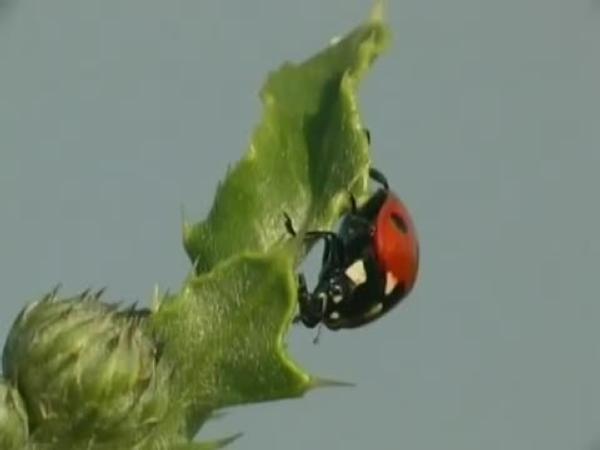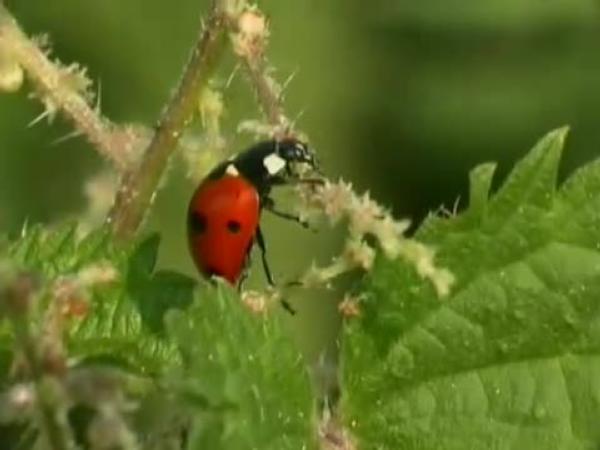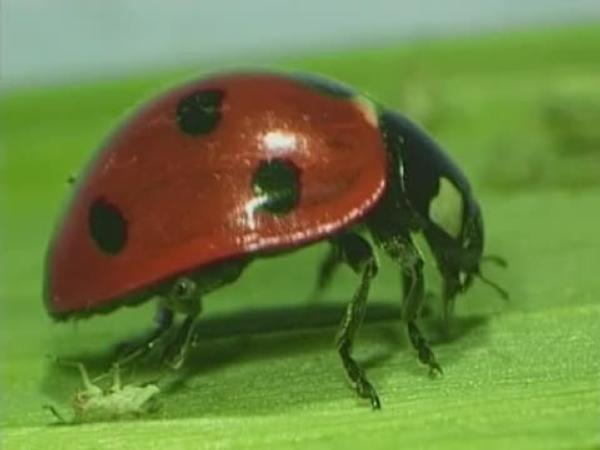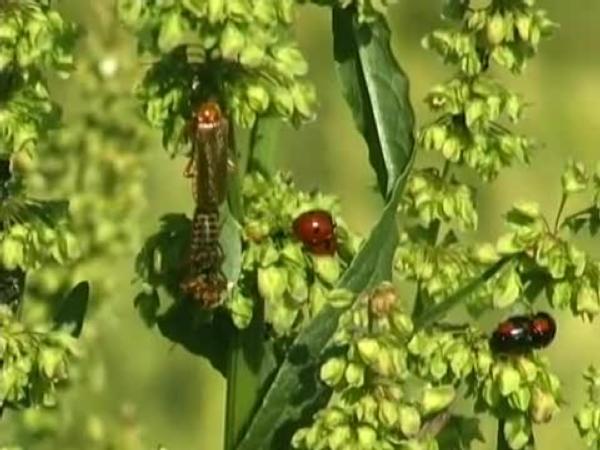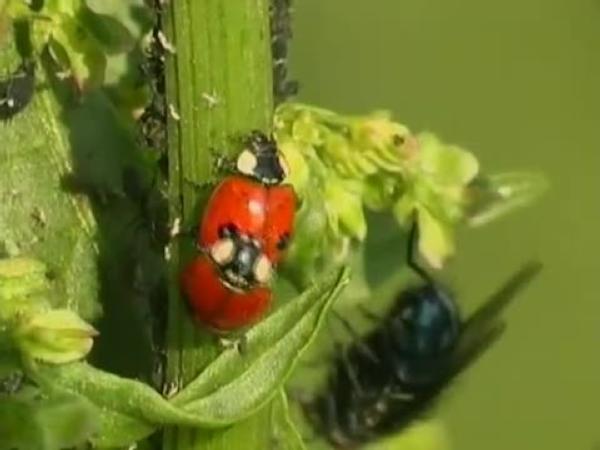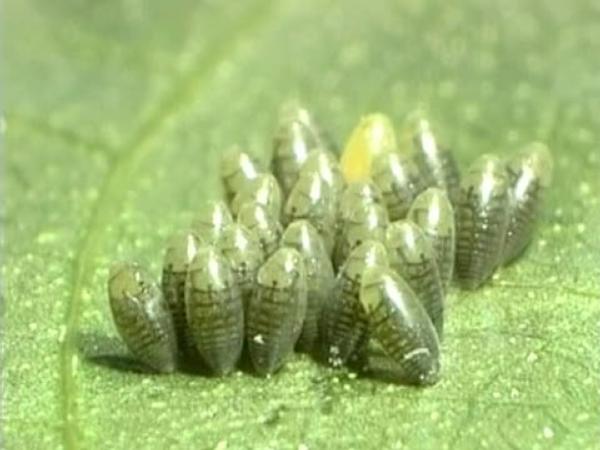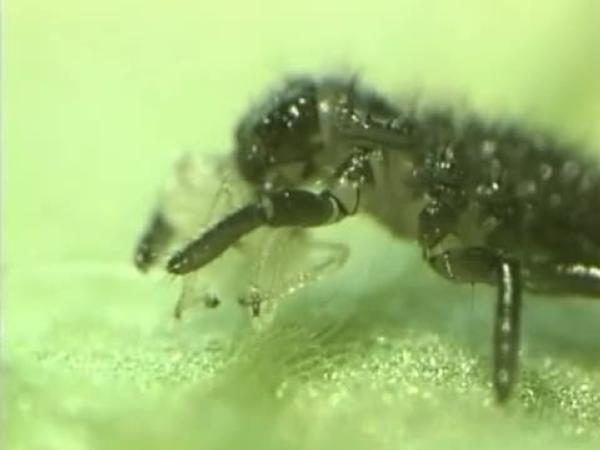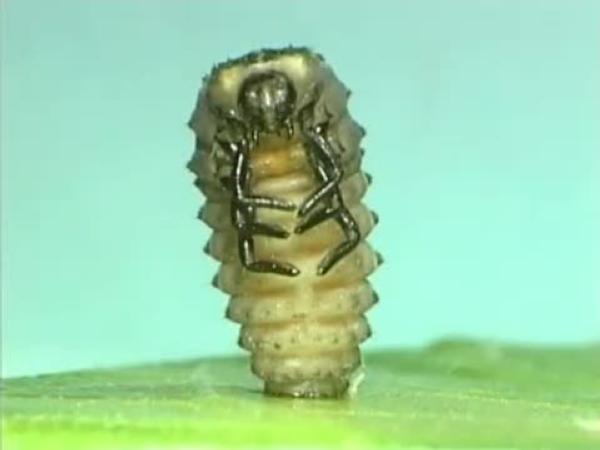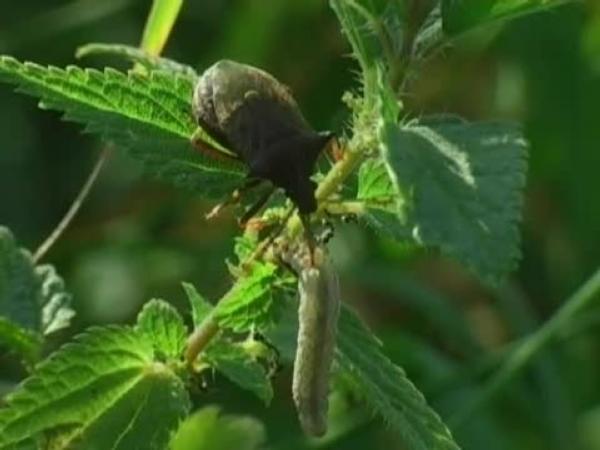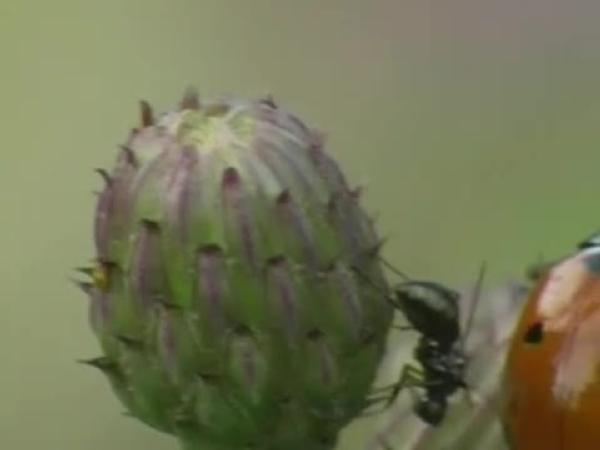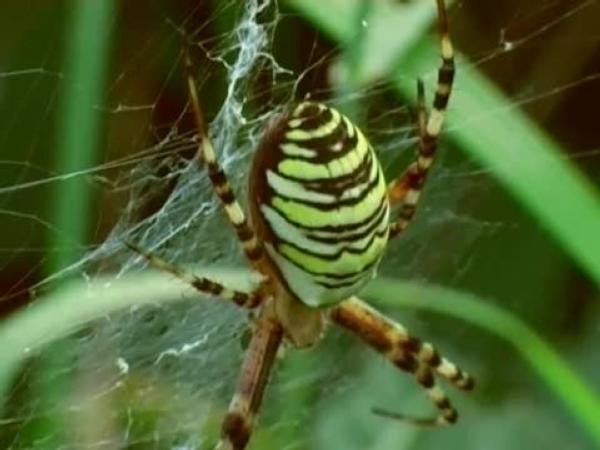Marienkäfer
Insekt des Jahres 2006

The Ladybird

1. Characteristics Ladybirds are a family of flying leaf beetles that is spread all over the world. The species best-known in Germany is the seven-spotted ladybird. It has been chosen insect of the year 2006 and is considered a symbol of luck here, which points to its huge popularity. It owes the colouring of its wings to dyes that also give carrots and tomatoes their red colour. Head and torso are mostly black. An exact definition of species is often difficult with ladybirds, because one and the same species can show many variations of pattern. With this twelve-spotted ladybird you can see clearly that ladybirds need not always have red wing tops. Yellow ones can be found as well. Also lady birds with black colouring and red spots like on this four-spotted variety are not infrequent here. Depending upon the species, the number of spots varies between two and twenty-four and is no indicator of the age of the beetle as many people believe. The red, brown, black and light spots are in fact characteristic of the species. The abundance of species of the ladybird is enormous and additionally there are thousands of variations of pattern. The spots sometimes even look like eyes as it is the case with the appropriately named eyed ladybird. The underside of the beetle is mostly black, but sometines also light or dark brown. Its six legs are built like the legs of all other insects. The division of the body into three parts, that is head, torso and hind quarters corresponds to that of all other insects. The tarsi, the entomologist`s name for its legs, have four joints. Their favourite habitats are meadows and woods, parks and gardens. This depends very much on specific plants and the food living on them. Generally they prefer warm climates and therefore develop the largest variety of species in the subtropics and tropics. 2. Reproduction and Development With most ladybirds the different sexes can hardly be distinguished at first glance. The males are basically smaller than the females; clearly visible distinguishing marks of sex are lacking, however. After the winter the ladybirds start reproducing at once. To mate with a female the male scrambles on top of her and inserts the tip of his penis into the opened end of the last ring of her hind- quarters. With very small beetles an exact classification of their species is often only possible by looking through a very powerful magnifying glass. The mating may take up several hours. The sperm is stored in a special sperm pocket by the females of most species. The different colouring of the two mating two-spotted ladybirds gives no information on their sex. The colours could be just the other way round. High temperatures intensify the mating activity. With some species this leads to an explosive reproduction in summer. The eggs, between 0,5 and 2 mm in size and of a light yellow or orange hue are laid in batches of 10 to 60 on the underside of leaves. Especially those plants are chosen that offer sufficient food for the offspring. Depending on temperatures and humidity, the development is completed after 5 to 8 days.Now the larvae can already be recognized through the thin egg skin. With a kind of egg tooth the larvae tear the skin and leave their shell. Like all beetle larvae those of the ladybird also consist of a head and twelve body rings the three first of which hold a pair of legs each. On the head there are the mouth parts which resemble those of the fully grown beetle. The larvae have got neither spots nor compound eyes like the fully grown beetle. The only task of the larvae is to ingest food and to develop. Ladybirds eat up to 60 aphids a day and this might amount to up to 3000 aphids by the end of their development. With their mandibles, their mouth parts, they open the aphids and after injecting gastric juices suck them dry. The empty aphid shell remains. With sufficient food the larvae develop quickly. The chitin shell, however, allows only a limited growth. A newer and larger skin is formed under the original chitin layer. The old skin is burst open and a far bigger larva emerges whose appetite for aphids is insatiasble. Depending upon the species, ladybird larvae shed their skin three or four times. The mouth parts of bigger larvae are able to eat aphids whole. With the last shedding of their skin they change their size as well as their colour and the bristles on the outer skin. Different numbers of yellow or orange spots are clearly visible. After 30 to 60 days the larvae are fully grown. This short period of development is typical of the predatory kind of larvae, such as the ladybird`s and allows two reproductive cycles a year. Larvae feeding on plants or their roots need a considerably longer time for development: the cockchafer 3 to 4 years and the stag beetle as many as 5 to 6 years. Beetles undergo a complete transformation, that means the larva additionally undergoes a pupal stage and the beetle looks completely different from the larva. With the help of a secretion the fully grown larva sticks its rear part to a suitable place and starts to pupate by slipping out of its larva skin.The colour of the pupa becomes darker and darker because the chitin layer becomes thicker every day. But it is still able to move. After some days the pupa begins to curl more and more. After 6 to 9 days, depending upon the temperatures, there it is: the fully developed ladybird slips out of its pupa skin. For the time being it is, as we can see, still uniformly yellow. Slowly it changes its colour to orange and the first spots become visible. Also its soft wings, which protrude from under the hard wing cases must dry. After a few hours its chitin armour has hardened, its hard wing cases and the soft wings underneath are dry and the colours typical of the species are visible. Like the larvae the fully grown beetle feeds almost exclusively on aphids and spider mites. That`s also why ladybirds are so popular. By the way, they have got their name because the farmers considered those beetles, which were immensely useful to them, a present from the Virgin Mary, the mother of Jesus, and named them after her. The seven spots are supposed to refer to the seven virtues of Mary . The ladybird has more than 1500 regionally different names in German: Marienkälbchen, Himmelsmiezel, Herrgottskäfer, Jesus- Chäferli, Leußfresser, Goldschäfchen, to mention only a few. 3. Enemies Ladybirds have quite a number of natural enemies. Besides birds, lizards and mice, it`s especially ground beetles, ichneumon flies, assassin bugs and spiders which are in pursuit of them. This spined stink bug is just sucking out a caterpillar. With its dagger like proboscis it can also skewer and suck out ladybirds. An emeny that specialises exclusively in ladybirds is the ichneumon fly which belongs to the family of braconid wasps. Only when this parasite succeeds in laying an egg extremely fast under the hard wing cases of its host, the ladybird, it can reproduce. The larvae that hatch there feed on the inside of the beetle, which leads to the slow death of the ladybird. Spiders mostly feed on insects they catch. Ladybirds defend themselves against enemies by secreting an evil smelling liquid. Perhaps the smell prevents this wasp spider from attacking the ladybird. The wolf spider is an enemy of the ladybird, too. Wolf spiders don`t spin webs but hunt to get their prey. Here we see a female. It lays its eggs into a cocoon, which it carries with it everywhere.It is fixed to the silk glands at the end of its hind- quarters. Spiders aren`t insects, they have eight legs and ocelli instead of compound eyes. A green stink bug annoys by its smell and is frightened away. Then the spider turns again to its prey. Here a green cucumber spider approaches the ladybird. However, it is chased away by the evil smelling secretion of the beetle. The cobweb weaver, too, is an enemy of the ladybird. Here it tries to entangle the ladybird in its web, but here, too, the secretion is effective. The beautiful, large spiral orb web belongs to a nursery web spider. It can be recognized at once by its conspicuous pattern. This time it`s a soldier beetle that has got caught in its web and has been entrapped immediately. But it succeeds in freeing itself skillfully from the threads. The spider, however, has noticed this and renews its attacks. This time there is no escape. Not even its yellow secretion, used in defence, has been able to rescue this ladybird. The cross spider has already wrapped it up as food supply and will eat it when hungry.

